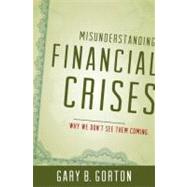
Note: Supplemental materials are not guaranteed with Rental or Used book purchases.
Purchase Benefits
What is included with this book?
| Preface | p. vi |
| Introduction | p. 3 |
| Creating the Quiet Period | p. 10 |
| Financial Crises | p. 29 |
| Liquidity and Secrets | p. 45 |
| Credit Booms and Manias | p. 59 |
| The Timing of Crises | p. 74 |
| Economic Theory without History | p. 87 |
| Debt During Crises | p. 98 |
| The Quiet Period and its End | p. 125 |
| Moral Hazard and Too-Big-To-Fail | p. 134 |
| Bank Capital | p. 151 |
| Fat Cats, Crisis Costs, and the Paradox of Financial Crises | p. 165 |
| The Panic of 2007-8 | p. 182 |
| The Theory and Practice of Seeing | p. 200 |
| Bibliographic Notes | p. 213 |
| Notes | p. 239 |
| References | p. 247 |
| Index | p. 273 |
| Table of Contents provided by Ingram. All Rights Reserved. |
The New copy of this book will include any supplemental materials advertised. Please check the title of the book to determine if it should include any access cards, study guides, lab manuals, CDs, etc.
The Used, Rental and eBook copies of this book are not guaranteed to include any supplemental materials. Typically, only the book itself is included. This is true even if the title states it includes any access cards, study guides, lab manuals, CDs, etc.